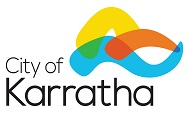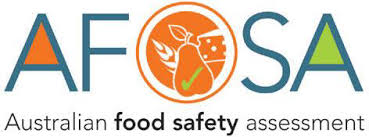Title Page
-
Business name
-
Food business category classification according to 3.2.2A
-
Manager/proprietor
-
Telephone number
-
Email address
-
Premises address
-
Conducted on
-
Prepared by
-
-
• Indicate compliance by answering "Compliant" or "Non-Compliant" for serious non-compliance. Select N/A if item is not applicable.
• Add photos and notes as necessary evidences
• To add a corrective measure, click "Add Action", provide a description, assign to a member, set priority, and due date
• Complete the audit by providing a digital signature
• Share your report by exporting as PDF, Word, Excel or Web Link
Receiving
-
1 Protection from contamination (5(1) of 3.2.2)
-
2 Identification/traceability of food (5(2) of 3.2.2)
-
3 Temperature control of PHF (5(3) & (4) of 3.2.2)
Storage
-
4 Protection from contamination (6(1)(a) of 3.2.2)
-
5 Appropriate environmental conditions (6(1)(b) of 3.2.2)
-
6 Temperature control of PHF inc frozen (6(2) of 3.2.2)
Processing
-
7 Safe and suitable food (7(1)(a) of 3.2.2)
-
8 Protection from contamination (7(1)(b)(i) of 3.2.2)
-
9 Adequate cooking/processing (7(1)(b)(ii) of 3.2.2)
-
10 PHF out of temp. control for min. time (7(2) of 3.2.2)
-
11 Cooling of PHF (7(3) of 3.2.2)
-
12 Reheating of PHF (7(4) of 3.2.2)
Display
-
13 Protection from contamination (8(1),(2),(3) & (4) of 3.2.2)
-
14 Temperature control of PHF incl. frozen (8(5) of 3.2.2)
Packaging
-
15 Appropriate materials and process (9 of 3.2.2)
Transportation and Distribution
-
16 Protection from contamination (10(a) of 3.2.2)
-
17 Temperature control of PHF (10(b) & (c) of 3.2.2)
Recalls/Food Disposal
-
18 Food for disposal not sold/recall process (11 & 12 of 3.2.2)
Health, Hygiene and Knowledge
-
19 Health of food handlers - responsibilities (14 of 3.2.2)
-
20 Hygiene of food handlers - responsibilities (13 & 15 of 3.2.2)
-
21 Food business - responsibilities (16 & 18 of 3.2.2)
-
22 Adequate handwashing facilities (17 of 3.2.2 & 14 of 3.2.3)
Training - Category 1 & 2 Food Businesses
-
23 Food handler training records (3 of 3.2.2 & 10 of 3.2.2A)
-
24 Food Safety Supervisor certificate (3 of 3.2.2 & 11 of 3.2.2A)
Records - Category 1 Food Businesses
-
25 PHF receipt temp. (5(3)(4) of 3.2.2 & 12 of 3.2.2A)
-
26 PHF storage temp. (6(2) of 3.2.2 & 12 of 3.2.2A)
-
27 PHF processing temp. (includes danger zone exposure time) (7(1)(b)(ii), 7(2) of 3.2.2 & 12 of 3.2.2A)
-
28 PHF cooling temp. & timeframes (7(3) of 3.2.2 & 12 of 3.2.2A)
-
29 PHF reheating temp. & timeframes (7(4) of 3.2.2 & 12 of 3.2.2A)
-
30 PHF display temp. and time control (8(5) of 3.2.2 & 12 of 3.2.2A)
-
31 PHF transport temp. & timeframe (10(b) & (c) of 3.2.2 & 12 of 3.2.2A)
-
32 Cleaning/sanitising (19 & 20 of 3.2.2 & 12 of 3.2.2A)
Premises and Hygiene
-
33 Cleanliness of premises, fittings, equipment (19 of 3.2.2)
-
34 Cleaning/sanitising of food contact surfaces (20 of 3.2.2)
-
35 Suitability and maintenance of premises, fittings and equipment (21 of 3.2.2 and 3, 10, 11 & 12 of 3.2.3)
-
36 Temperature measuring device (22 of 3.2.2)
-
37 Use of "single use" items (23 of 3.2.2)
-
38 Control of animals and pests (24 of 3.2.2)
-
39 Water supply adequate and potable (4 of 3.2.3)
-
40 Disposal of sewage and waste water (5 of 3 2.3)
-
41 Storage of refuse, recyclable matter and cooking oil (6 of 3.2.3)
-
42 Adequate ventilation and lighting (7 & 8 of 3.2.3)
-
43 Storage of personal effects/chemicals (15 of 3.2.3)
-
44 Adequate toilet facilities (16 of 3.2.3)
Other
-
45 Food safety program
-
46 Allergen matrix
-
PHF means Potentially Hazardous Food. See over for definition.
-
Other comments
-
Add media
-
Further action?
-
Please attend to any outstanding items by the due date. For enquiries contact the officer on the number below. Reinspection date:
-
I have read and I understand the contents of this assessment. Proprietor/staff name and signature
-
Officer name and signature
-
Officer contact number
Food Safety Fundamentals
-
Following these 5 Rules will help keep our food safe
Store potentially hazardous foods at the right temperature
-
• Bacteria need warmth to grow and some bacteria need to grow to large numbers to make people ill
• Keeping food at or less than 5°C will cause food poisoning bacteria to grow slowly that it is rarely a problem
• Keeping food at or above 60°C will cause the bacteria to die off as the temperature rises
• For these reasons, between 5°C and 60°C is known as the 'Danger Zone'
What is Potentially Hazardous Food?
-
Some foods better support bacterial growth and need special care. These foods are moist, not acidic and contain enough nutrients for bacteria to grow.
Such foods include raw and cooked meat, cooked rice, cooked vegetables, prepared salads and milk.
KEEP POTENTIALLY HAZARDOUS FOOD AT OR BELOW 5°C OR AT OR ABOVE 60°C
Cook food thoroughly
-
• Ensure the centre of frozen food is fully thawed before cooking
• Cook chicken until the juices run clear
• Cook mince patties thoroughly so there is no pink
• Stir foods in microwave ovens during cooking to ensure even heating
• Use a thermometer to check that food in the centre is at least 75°C after cooking
• Rapidly reheat food to 70°C for at least two (2) minutes
Cool food quickly
-
• Do not leave potentially hazardous foods to cool on the bench top or stove overnight
• Once cooked food has cooled to reasonably warm (about 45°C) it should be put into the fridge
• To cool food faster divide it into smaller containers/portions and use metal containers
Don't cross contaminate
-
Avoid transferring harmful bacteria from raw food to prepared food by:
• Washing hands thoroughly after handling raw meat
• Washing and sanitising chopping boards, knives and any other utensils after preparing raw meat or use separate equipment
• Storing uncooked food below cooked food in the refrigerator and keeping all food covered
Clean all equipment
-
• All work areas, utensils, such as slicers and mixers, must be thoroughly cleaned to ensure bacteria don't have the opportunity to survive and contaminate food the next time the equipment is used
• Equipment that comes into contact with food, such as knives, chopping boards and eating utensils need to also be sanitised using water at greater than 77°C and/or a chemical sanitiser
Use good hygiene practices
-
• Regularly wash and dry your hands using soap and paper towel especially:
- Before starting food preparation
- After handling raw food especially raw meat
- After using the toilet
• Notify your supervisor if you think you might have food poisoning
• Avoid handling food until 48 hours after symptoms such as diarrhoea or vomiting have ceased -
Should you have any queries or require clarification about any of the above, contact your local Environmental Health Officer on the number listed.
Source: 'For Goodness Sake Read This! Food Safety Fundamentals' Dept. Human Services (SA)







